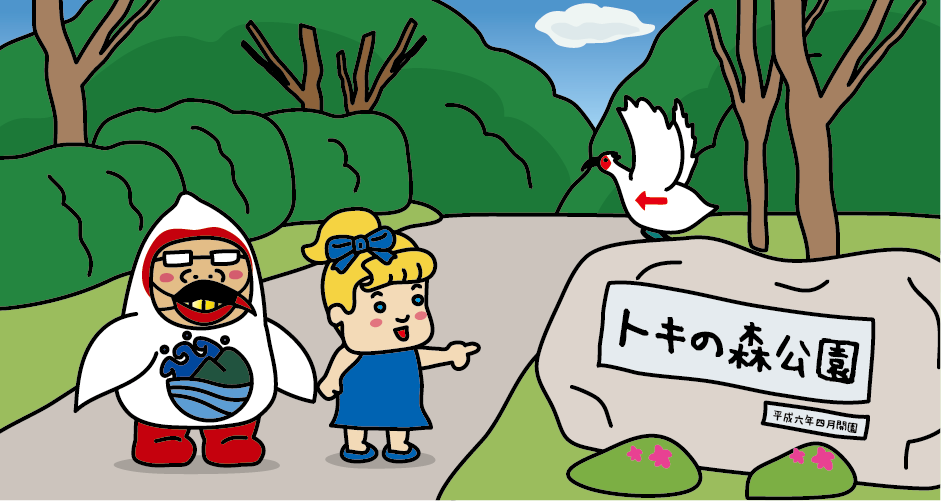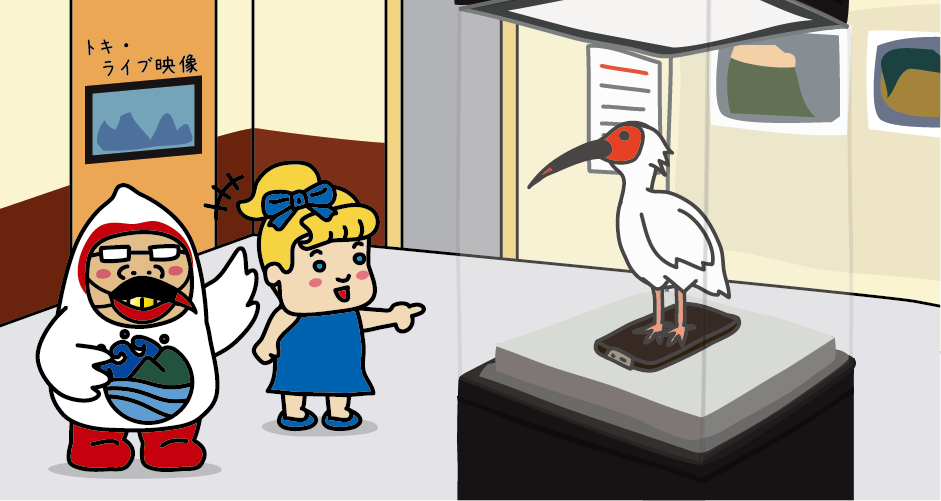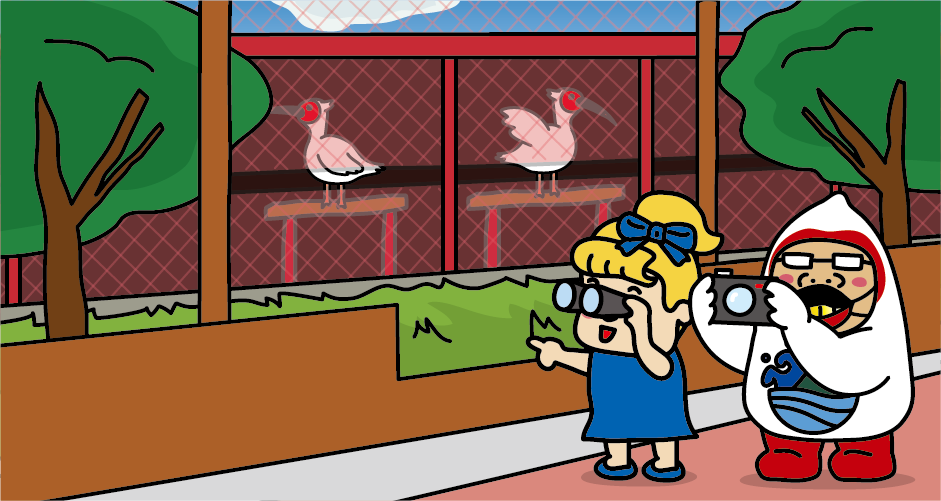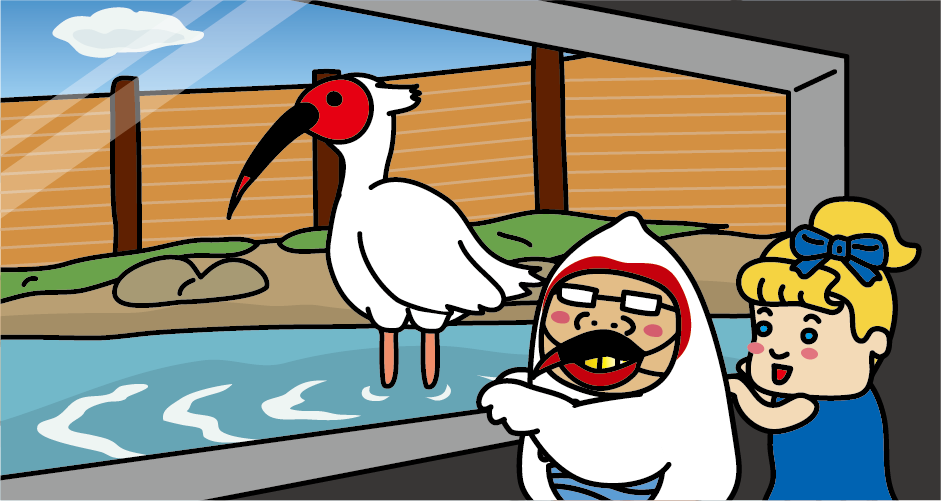How to meet Japanese crested ibises on Sado Island
You can see critically endangered crested ibis on Sado island! With just 2cm of distance so you’ll be certainly excited!
This time, I’m going to explain about crested ibis (Toki) who is critically endangered. Crested ibis (Toki) was present in all over east Asia from Japan, Russia, China and Korea until early 19th century. However, from the late 19th century to 20th century, many of them were hunted and most of their habitat were destroyed due to environmental degradation and they became critically endangered in the late 20th century. In Japan, in 1981, artificial breeding was attempted by capturing last 5 wild crested ibis on Sado Island, Niigata Prefecture but it didn’t work out. In 2003, the last crested ibis born in Japan died. In China, though it was thought to be extincted in the mid 20th century, 7 crested ibis were found in the central part of China in 1981. With environmental preservation of their habitat and artificial breeding, there are more and more crested ibis. In 1999, a pair of crested ibis were endowed to Japan from China and since, in Japan too, artificial breeding is giving results and the number of crested ibis is increasing (Japanese crested ibis and Chinese crested ibis are genetically identical birds). In 2008, as the first step to reviving wild crested ibis, 10 crested ibis were released to the sky of Sado Island. Since then, release of artificially bred crested ibis is continuing every year.

Crested ibis (Toki) is a bird of Pelecaniformes order, Threskiornithidae family. It’s length is about 75cm and with its wings it reaches 140cm. The scientific name is “Nipponia nippon”. German doctor Siebold who came to Japan at the end of Edo period sent the sample of crested ibis to Dutch museum. At that time, it was thought to exist only in Japan so the scientific name “Nipponia nippon” was given. Though crested ibis is written “scarlet hern” in Japanese character, it doesn’t belong to the same family as hern. Their body is white and inside their wings and remex are in dark pink with scarlet. This color is called “crested ibis color” (the color number is #F5C9C6). One of the reason that crested ibis became critically endangered was the over-hunting for this beautiful crested ibis color feather. Also, they eat weatherfish, river crab and frog stepping on planted seedlings so they were hunted also as bird pest of paddy. In reproductive period (from January to June), they secrete black powder from the neck, put it all over the body and turn into black-gray color. The black-gray colored sacred ibis is the sign of reproductive period and young and old ones stay in white during reproductive period. However, until mid 20th century, it as believed that there exists 2 sorts of crested ibis, in white and in black-gray.

Sado Island in Niigata Prefecture is where last wild crested ibis existed. In order to protect and breed critically endangered crested ibis, the Ministry of the Environment established “Sado Japanese Crested Ibis Protection Center” in Sado Island where it existed to the end. Though the Sado Japanese Crested Ibis Protection Center is not open to public, you can observe crested ibis in “Toki Exposition Hall” and “Toki Exchange Plaza” (completed in 2013) in “ Toki no Mori Park (Crested Ibis forest park)” next to the protection center. Also, in Toki no Mori Park, there is a monument of honor of “Kin”, the last Japanese born crested ibis. Kin was estimated to have lived to 36 years old (about 100 years in human) so he lived long.

In “Toki Exposition Hall”, you can learn the biology and history of crested ibis and the protection activity from panel and video etc. Stuffed crested ibis and skeleton samples are also exhibited.

From the observation path in Toki Exposition Hall, you can observe crested ibis in protection center. The Sado Japanese Crested Ibis Protection Center is a facility raising and breeding crested ibis. Crested ibis is a very timid and vigilant bird so the observation path is set far from the cage.

“Toki Exchange Plaza” is the most popular facility in Toki no Mori Park where you can observe biology of crested ibis such as flying, foraging and nesting in the large cage which imitates natural environment, from close distance through magic mirror. Before, we could only observe crested ibis from observation path in exposition and live camera but since Toki Exchange Plaza is completed, we can observe the way they catch weatherfish, build nest, incubate and raise baby birds with only 2 cm of distance.
 Since 2008, crested ibis is released to wild every year. Ones selected from those raised in Crested Ibis Protection Center are transfered to “Reviving Wild Station” and released after acclimatizing training. So far, 446 crested ibis were released (number in February 2023). Some of them may be attacked by raptores, become ill or die in harsh natural environment. In 2016, baby birds were born from the couple who were born in the wild (the grand-children generation of released bird). This birth of “pure wild” baby bird gained attention since it was after 40 years. Currently, around Sado Island, there are an estimated 569 crested ibis together with those released and born in wild (of these, an estimated 412 are wild-born crested ibises, number in February 2023). If you wish to see wild crested ibis in Sado Island, you can find in paddy field near crested ibis forest park. It’s easiest to find them while they eat. During reproductive period from January to June, they turn into black-gray color. From September to December, after rice harvest, it’s easier to find them since they are white. When observing wild crested ibis, there are rules such as “don’t get close to crested ibis”, “don’t get off from the car”, “don’t make large noise or light” etc. Please pay attention while you observe.
Since 2008, crested ibis is released to wild every year. Ones selected from those raised in Crested Ibis Protection Center are transfered to “Reviving Wild Station” and released after acclimatizing training. So far, 446 crested ibis were released (number in February 2023). Some of them may be attacked by raptores, become ill or die in harsh natural environment. In 2016, baby birds were born from the couple who were born in the wild (the grand-children generation of released bird). This birth of “pure wild” baby bird gained attention since it was after 40 years. Currently, around Sado Island, there are an estimated 569 crested ibis together with those released and born in wild (of these, an estimated 412 are wild-born crested ibises, number in February 2023). If you wish to see wild crested ibis in Sado Island, you can find in paddy field near crested ibis forest park. It’s easiest to find them while they eat. During reproductive period from January to June, they turn into black-gray color. From September to December, after rice harvest, it’s easier to find them since they are white. When observing wild crested ibis, there are rules such as “don’t get close to crested ibis”, “don’t get off from the car”, “don’t make large noise or light” etc. Please pay attention while you observe.
Access to Toki no Mori Park
From Tokyo
It takes about 2 hours from JR Tokyo Station to JR Niigata Station by Joetsu Shinkansen. It takes about 15 minutes by local bus from JR Niigata Station to Niigata Port.
From Osaka
It takes about 1 hour from Itami Airport to Niigata Airport. It takes about 25 minutes by shuttle bus from Niigata Airport to Sado Kisen Niigata Port Terminal.
From Sado Kisen Niigata Port Terminal to Sado Kisen Ryotsu Port Terminal, it takes about 1 hour by jetfoil and about 2 hours and 30 minutes by car ferry.
It takes about 30 minutes from Ryotsu Port Sado Kisen Bus Stop to Toki no Mori Park Bus Stop by route bus (south line). Get off at Toki no Mori Park Bus Stop.










You need to login to comment on an article.